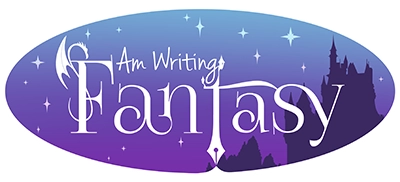I’m in the turbulent undertow of changing an entire series of book covers. Why? They just didn’t work.
There are a lot of reasons to select the books covers we, as authors, do. Because they fit what we can afford. Because they are a scene from the book (one of my personal favorites and hangups). Because it is the best we can do.
None of those reasons are really good enough.
Not unless you’ve considered the reader. Or I should say the potential reader. Let’s face it, the cover is immensely important to attracting readers. We’ve heard it. We might deny it, hate it, or shout huzzah at the thought, but it is a reality. I do it when I go looking for a book. Heck, a really good cover will draw me to a book when I’m not even looking for something new to read. It is just so good I HAVE to check it out.
And oh my gosh, isn’t that what every author wants?
You have about five seconds to catch the interest of a reader so that maybe they will invest a little more time to look at the cover in depth, possibly check out the book description, hopefully even buy the book. In that tiny space of time, that cover needs to elicit curiosity at the least and love at first sight at the best. And usually from the size of a thumbnail. From a cover a reader should be able to discern the genre, something about the novel, and even the level of professionalism that will be found within the pages.
The good news is that there are more tools to achieve this than you might think.
There is the image, the title, the subtitle, the arrangement, the fonts used, and the color scheme. Did you just think of the image and title? So did I once. Even as a professional artist it took me a few tries and lots of studying to get a feel for the nuances of book covers. And I’m sure I’ll keep learning and improving.
That learning curve, especially when steepened by switching genres, is what led me to my current predicament of editing a set of four book covers. Which I thought sounded easy at first. Until I realized how many places I used those book covers and title images on my website to in book advertisements. Plus there are the paperback books. Thank goodness the first audio book is only in production. Hopefully I can have that correct from day 1!
As odious as this change has become, it makes a great example to look at why the old covers weren’t working and what a good cover really needs. It isn’t a failure if you can turn it into a teachable moment, right? 😉
The biggest change is to book 1 of the series, which is Stories from the War and is part of my dystopian thriller Friends of my Enemy. This is a lineup of the, not 1, but 3 covers that will have graced this book (please no more!) when I upload the new cover this weekend.
Do you see the flaws?I switched from the first cover because it is so dark that at thumbnail size it is meaningless and rather unattractive, despite the fact it took hours of work and the photo was custom done by my husband (and so now graces the back of all four books in paperback!).
The second cover came about because I knew the first wasn’t good enough. Depending on genre, a character (especially a person) on the cover is immediately more relatable to a reader. And, as sad as the fact is, an attractive woman on the cover usually elicits the most positive response from BOTH men and women readers (though I don’t think they tested for clothing amounts in that survey!).
One of my main characters is a red head and when I found the picture of the model I used, I knew that mischievous look was Arinna. It was perfect. And it is a perfect representation of her. But not for a cover. After a year of using this cover, I asked a few readers I trusted who loved the books what I could do better to promote the series. And the answer was they really didn’t know what was going on with this cover. A close up of a pretty girl didn’t fit the genre no matter how much gritty splatter I tossed over the cover.
I can’t tell you how much I appreciated that wake-up call (and it was only part of the series re-do! More on that later). It made me do some serious research on what was being published and what was popular in the dystopian, apocalyptic, and thriller genres where this series fits. There are a few with pretty girls. Those covers showed future tech clothing, strange gear, or lethal weapons. My book without any of that stuck out like an ugly duckling. Time for it to grow up to a beautiful black swan!
When I published the story over a year ago, I spent some time looking at the genre, but not much and not with the much more analyzing eye I’ve developed in a year of running my writing as a publishing business. And what the genre expects of a cover was clear when I started pouring over them this month.
The majority of the books had a distant landscape (or close landscape that had a lot of depth to pull you in) that was brutal: deserts, destroyed cities, and wastelands. Often there was a figure or two in the foreground. Even in the thriller category there was little action to the cover. They ooze suspense with a dose of hopeless odds.
And oh my gosh the fonts.
Seriously, the fonts make a genre. When I first designed the covers, I didn’t know how to load new fonts in Photoshop (how far I’ve come…) much less really looked at how different the fonts were in each genre. I was accustomed to fantasy and had a feel for those style fonts because I’d seen them on every book I read. But when I started looking at fonts across genres, the similarities and differences amazed me. Scifi is totally different from romance. And horror! Or thrillers. Or children’s books. If the image isn’t a clue to the genre, than the font choice is.
So I needed a better photo and a more fitting font. Bare minimum.
At least I can say that I’m happy with the actual book name and really happy with the series name. And I like the subtitle. It works and matches the correct keywords.
That leaves the arrangement and the color scheme.
A lot of pure thriller books have a two image cover with an upper 2/3 of the book being one image, usually suspenseful and detailed of a city or alley way. The bottom 1/3 can be a figure or two, sometimes silhouetted. But that is pure thriller.
There is a newer trend for book titles to be at the bottom of the book with the author’s name above.
It weights the bottom to give a different scale and vibe to a cover. I like it, but find it more common in fantasy though there is a growing number of dystopian books using it (my newest fantasy cover fits this style, which also helps to separate it from the previous series). And there are a few rare and enticing books that use vertical titles! It has to fit the book and I think the example of the Institute is awesome. There isn’t much going on in the cover but you just know lots of bad things are going on in that book just be the cover, title, and that strange title arrangement including a backward ’S’. Love it!
I already mentioned the dystopian and apocalyptic books have a vast wasteland with a figure near the front. Normally the figure is facing away so you can’t see her or his face.Or if I wanted to go more scifi/future dystopian like the Divergence Series I could have the figures wearing strange clothing and gazing at the reader. But this is not a scifi heavy book. And when I found the image of a nuclear-like blast filling the sky over what looked to be a European city … I kept coming back to it. I liked the unstoppable foreboding of it. And it really fits the book.
And then I realized it really fit the series!
The last book is also a red/orange color scheme while the central two are grey/blue. The series is bookended by fighting and war with a strained peace in the center. See how much the colors say? This is why the color scheme is also important. Horror is often black and red for a reason. Children’s books are pastels. Post-Apocalyptic novels are gritty with sharp dashes of bright color (which color depends on the book – even green can be forbidding if nature is out of control). I’ve seen authors fuss over non-fiction books as well. Would a pink title turn off male readers? It is a valid question to consider even if you dislike lacing color schemes with gender.
I think when seen together, the series with its new covers (the last three got new fonts and a few minor tweaks) flows and fits the genre. Alone they are strong covers too.
Working on these changes brings me back to my epic fantasy series. I always wanted more glowing magic along with the elemental powers. But I resist playing with them. It is as bad as wanting to go back and improve your earlier novels because your writing has improved. But every once in awhile when I’m bored and have photoshop open, I admit I do play with the earlier covers. But nothing has stuck yet!
There is a lot of tweaking to this cover for Stories from the War and its image “under the hood” so to speak. Layers of color and texture along with masks to create something gritty but vibrant. Happily, the readers I asked like the small figure I’d used in the bottom corner. I tweaked a few things there as well. Hopefully the changes help. I’ll give you an update if I see an uptick in downloads!
Of course, it won’t all be because of new covers. I’m improving descriptions and keywords. I’m changing the pricing around and the sign-up options for a free book. And I’m unpublishing 8 stories. Yes, I’m unpublishing 8 books.
See, when I wrote Stories from the War, which is 11 consecutive short stories, I released the first 8 as stand alone short books. Most of them are even free. There is an advert there to sign up and get the full book free. I thought it made sense. Saying it this way makes sense. Talking to readers, it is a mess.
Why did I release the novel this way? Was it a failure and that’s why I’m unpublishing them? Those are great questions. And if you want to know the answer leave a comment below and I’ll make that the topic of my next blog post!
Now everyone, let’s take a look at some covers! Which are your favorites? Which do you want help with?
















Covers maketh the book that’s for sure – I’m using a new pen name, and so I’m also brand-building for the ‘Sian Glirdan look’ for my fantasy work. Fonts certainly are the key – there was a lovely blog-tutorial somewhere recently for all kinds of genres and they do scream out the nmuances that you want to create 🙂